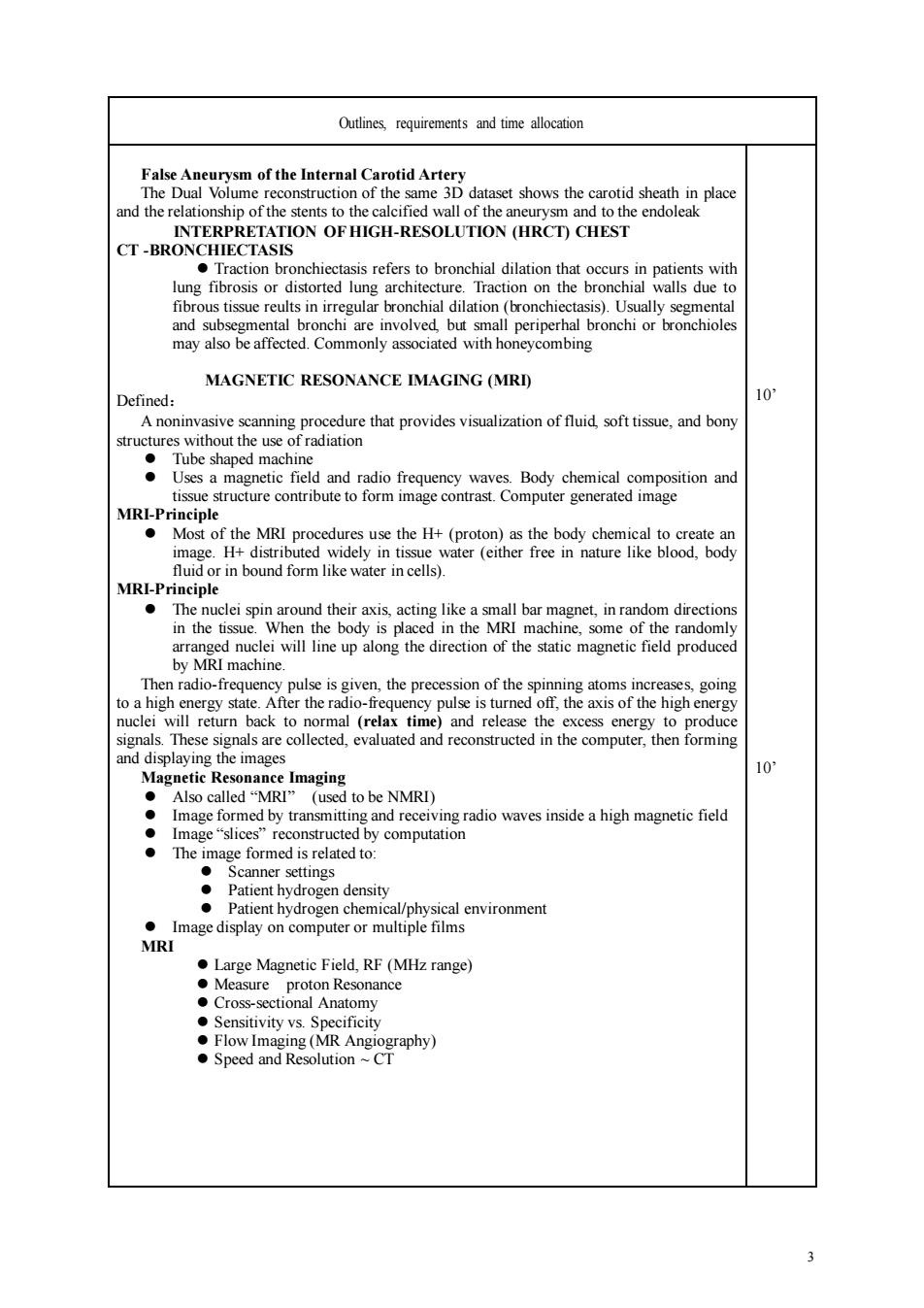正在加载图片...

Outlines requirements and time allocation and the relationship of the stents to the calcified wall of the aneurysm and to the endoleak CT-BRONCHECESTSON OF HIGH-RESOLUTION (HRCD CHEST Traction bronchiectasis refers to bronchial dilation that occurs in patients with lung fibrosis or walls due t女 may also be affected.Commonly associated with honeycombing MAGNETIC RESONANCE IMAGING (MRD Defined: 10 io the MRI procedures use the (proton)as the body chemical to create an und fori MRI-Principle agnet,in random direction arranged nuclei will line up along the direction of the static magnetic field produced by MRI machine. 0 10 d h (used to be NMRI) radio waves inside a high magnetic field MRI Large Magnetic Field,RF (MHz range) ctional Anat Sensitivity vs.Specificity 3 Outlines, requirements and time allocation False Aneurysm of the Internal Carotid Artery The Dual Volume reconstruction of the same 3D dataset shows the carotid sheath in place and the relationship of the stents to the calcified wall of the aneurysm and to the endoleak INTERPRETATION OF HIGH-RESOLUTION (HRCT) CHEST CT -BRONCHIECTASIS ⚫ Traction bronchiectasis refers to bronchial dilation that occurs in patients with lung fibrosis or distorted lung architecture. Traction on the bronchial walls due to fibrous tissue reults in irregular bronchial dilation (bronchiectasis). Usually segmental and subsegmental bronchi are involved, but small periperhal bronchi or bronchioles may also be affected. Commonly associated with honeycombing MAGNETIC RESONANCE IMAGING (MRI) Defined: A noninvasive scanning procedure that provides visualization of fluid, soft tissue, and bony structures without the use of radiation ⚫ Tube shaped machine ⚫ Uses a magnetic field and radio frequency waves. Body chemical composition and tissue structure contribute to form image contrast. Computer generated image MRI-Principle ⚫ Most of the MRI procedures use the H+ (proton) as the body chemical to create an image. H+ distributed widely in tissue water (either free in nature like blood, body fluid or in bound form like water in cells). MRI-Principle ⚫ The nuclei spin around their axis, acting like a small bar magnet, in random directions in the tissue. When the body is placed in the MRI machine, some of the randomly arranged nuclei will line up along the direction of the static magnetic field produced by MRI machine. Then radio-frequency pulse is given, the precession of the spinning atoms increases, going to a high energy state. After the radio-frequency pulse is turned off, the axis of the high energy nuclei will return back to normal (relax time) and release the excess energy to produce signals. These signals are collected, evaluated and reconstructed in the computer, then forming and displaying the images Magnetic Resonance Imaging ⚫ Also called “MRI” (used to be NMRI) ⚫ Image formed by transmitting and receiving radio waves inside a high magnetic field ⚫ Image “slices” reconstructed by computation ⚫ The image formed is related to: ⚫ Scanner settings ⚫ Patient hydrogen density ⚫ Patient hydrogen chemical/physical environment ⚫ Image display on computer or multiple films MRI ⚫ Large Magnetic Field, RF (MHz range) ⚫ Measure proton Resonance ⚫ Cross-sectional Anatomy ⚫ Sensitivity vs. Specificity ⚫ Flow Imaging (MR Angiography) ⚫ Speed and Resolution ~ CT 10’ 10’